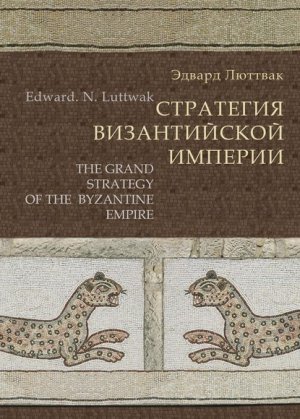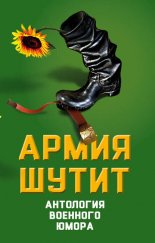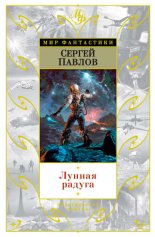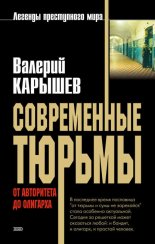Notice: Undefined variable: contentRead in /var/www/www-root/data/www/knizh.ru/funcs.php on line 681
Notice: Undefined variable: row in /var/www/www-root/data/www/knizh.ru/funcs.php on line 719
Notice: Trying to access array offset on value of type null in /var/www/www-root/data/www/knizh.ru/funcs.php on line 719
ïŋ―ïŋ―ïŋ―ïŋ―ïŋ―ïŋ―ïŋ―ïŋ―ïŋ― ïŋ―ïŋ―ïŋ―ïŋ―ïŋ―ïŋ―ïŋ―ïŋ―ïŋ―ïŋ―ïŋ―ïŋ― ïŋ―ïŋ―ïŋ―ïŋ―ïŋ―ïŋ―ïŋ― ïŋ―ïŋ―ïŋ―ïŋ―ïŋ―ïŋ―ïŋ― ïŋ―ïŋ―ïŋ―ïŋ―ïŋ―ïŋ―

ïŋ―. Heraclius: Emperor of Byzantium. Cambridge: Cambridge University Press, 2003.
ïŋ―. Some Thoughts on Byzantine Military Strategy. The Hellenic Studies Lecture. Brookline, Mass.: Hellenic College Press, 1983.
Kazhdan, Alexander. ïŋ―The Notion of Byzantine Diplomacy.ïŋ― In Jonathan Shepard and Simon Franklin, eds., Byzantine Diplomacy. Aldershot, UK: Variorum, 1992.
Kazhdan, Alexander, and Giles Constable. People and Power in Byzantium: An Introduction to Modern Byzantine Studies. Washington, D.C.: Dumbarton Oaks, 1982.
Kazhdan, Alexander, and Michael Mcormick. ïŋ―The Social World of the Byzantine Court.ïŋ― In Henry Maguire, ed., Byzantine Court Culture from 829 to 1204. Washington, D.C.: Dumbarton Oaks Research Library / Harvard University Press, 1997.
Keen, Maurice. Chivalry. New Haven: Yale University Press, 1986.
Kekaumenos. Raccomandazioni e consigli di un galantuomo: Stratagikon. Ed. and trans. Maria Dora Spadaro. Alessandria: Edizioni delFOrso, 1998.
Kennedy, Hugh. The Armies of the Caliphs: Military and Society in the Early Islamic State. New York: Routledge, 2001.
ïŋ―. ïŋ―Justinianic Plague in Syria and the Archaeological Evidence.ïŋ― In Lester K. Little,
ed., Plague and the End of Antiquity: The Pandemic of 541ïŋ―750. Cambridge: Cambridge University Press, 2006.
Khazanov, Anatoly M. Nomads and the Outside World. 2nd ed. Madison: University of Wisconsin Press, 1994.
Kinnamos, John. Deeds of John and Manuel Comnenus. Trans. Charles M. Brand. New York: Columbia University Press, 1976.
Kitto, H. D. F. The Greeks. Harmondsworth, UK: Penguin Books, 1951.
Klek, Markus. ïŋ―Making an Asiatic Composite Bow.ïŋ― http://www.primitiveways.com/pt-com-posite_bow.html.
Kolbaba, Tia M. ïŋ―Fighting for Christianity: Holy War in the Byzantine Empire.ïŋ― In John F. Haldon, ed., Byzantine Warfare. Aldershot, UK: Ashgate, 2007.
Kolias, Taxiarchis G. Byzantinische Waffen: Ein Beitrag zur byzantinischen Waffenkunde von den Anfangen bis zur lateinischen Eroberung. Vienna: Verlag der ostereichischen Akademie der Wissenschaften, 1988.
Koutrakou, Nike. ïŋ―Diplomacy and Espionage: Their Role in Byzantine Foreign Relations, 8-10th Centuries.ïŋ― Graeco-Arabica 6 (1995): 125ïŋ―144.
Lamport, L., R. Shostak, and M. Pease. ïŋ―The Byzantine Generals Problem.ïŋ― ACM Transactions on Programming Languages and Systems 4 (1982): 382ïŋ―401.
Lee, A. D. ïŋ―The Eastern Empire: Theodosius to Anastasius.ïŋ― In A. Cameron, B. Ward-Per-kins, and M. Whitby, eds., Late Antiquity: Empire and Successors, A.D. 425ïŋ―600. Vol. 14 of The Cambridge Ancient History. Cambridge: Cambridge University Press, 2001.
ïŋ―. Information and Frontiers: Roman Foreign Relations in Late Antiquity. Cambridge:
Cambridge University Press, 1993.
Leites, Natan Constantin. The Operational Code of the Politburo. New York: McGraw-Hill, 1951.
Lewis, Naphtali, and Reinhold Meyer. Roman Civilization: The Empire. New York: Harper Torchbooks, 1966.
Liber Pontificalis. Translated by Raymond Davis as The Book of Pontiffs: The Ancient Biographies of the First Ninety Roman Bishops to A.D. 715. Liverpool: Liverpool University Press, 1989.
Linder, Amnon. The Jews in Roman Imperial Legislation. Detroit: Wayne State University Press, 1987.
Little, Lester K., ed. Plague and the End of Antiquity: The Pandemic of 541ïŋ―750. Cambridge: Cambridge University Press, 2006.
Liutprand of Cremona. Relatio de legatione Constantinapolitana (Narrative of the Embassy to Constantinople). Translated by F. A. Wright as The Works of Liutprand of Cremona. New York: Dutton, 1930.
Loreto, Luigi. ïŋ―II paradosso Luttwakiano power projection, low intensity e funzione del limes.ïŋ― In Per la storia militare del modo antico, ed. Luigi Loreto, pp. 84ïŋ―92. Naples: Jovene, 2006.
ïŋ―. ïŋ―La Storia della grand strategy un dibattito Luttwak?ïŋ― In Per la storia militare del
mondo antico, ed. Luigi Loreto, pp. 67ïŋ―81. Naples: Jovene, 2006.
Jones, A. H. The Later Roman Empire, 284ïŋ―602: A Social and Economic Survey. Oxford: Basil Blackwell, 1973.
Luttwak, Edward N. The Grand Strategy of the Roman Empire: From the First Century A.D. to the Third. Baltimore: Johns Hopkins University Press, 1976, 2007.
ïŋ―. ïŋ―The Operational Level of War.ïŋ― International Security 5, no. 3 (Winter 1980ïŋ―1981):
69-79.
ïŋ―. Strategy: The Logic of War and Peace. Cambridge: Belknap Press of Harvard University Press, 2001.
Lydus, John [John the Lydian]. On the Magistracies of the Roman Constitution. Trans. T. F. Carney. Sydney: Wentworth Press, 1965.
Macrides, Ruth. ïŋ―Dynastic Marriages and Political Kinship.ïŋ― In Jonathan Shepard and Simon Franklin, eds., Byzantine Diplomacy. Aldershot, UK: Variorum, 1992.
Maenchen-Helfen, Otto. J. The World of the Huns: Studies in Their History and Culture. Ed. Max Knight. Berkeley: University of California Press, 1973.
Magdalino, Paul. ïŋ―In Search of the Byzantine Courtier.ïŋ― In Henry Maguire, ed., Byzantine
Court Culture from 829 to 1204. Washington, D.C.: Dumbarton Oaks Research Library / Harvard University Press, 1997.
Maguire, Henry, ed. Byzantine Court Culture from 829 to 1204. Washington, D.C.: Dumbarton Oaks Research Library / Harvard University Press, 1997.
Mango, Cyril A. Byzantium: The Empire of New Rome. New York: Scribnerïŋ―s, 1980.
ïŋ―. ïŋ―The Water Supply of Constantinople.ïŋ― In Cyril A. Mango and Gilbert Dagron, eds.,
Constantinople and Its Hinterland. Aldershot, UK: Variorum, 1995.
Mango, Cyril A., and Gilbert Dagron, eds. Constantinople and Its Hinterland. Aldershot, UK: Variorum, 1995.
Mann, John C. ïŋ―Power, Force and the Frontiers of the Empire.ïŋ― Journal of Roman Studies 69 (1979): 175ïŋ―183.
Marcellinus Comes. Trans. Brian Coke. Byzantina Australiensia 7. Sydney: Australian Association for Byzantine Studies, 1995.
Marcovich, M., ed. Heraclitus: Greek Text with a Short Commentary. Merida, Venezuela: Los Andes University Press, 1967.
Marsden, E. W. Greek and Roman Artillery: Historical Development. Oxford: Clarendon Press, 1969.
ïŋ―. Greek and Roman Artillery: Technical Treatises. Oxford: Clarendon Press, 1971.
Martin-Hisard, Bernardette. ïŋ―Constantinople et les Archontes du Monde Caucasien dans le Livre de Ceremonies.ïŋ― In Travaux et memoires du Centre de recherche dïŋ―histoire et civilisation byzantine, no. 13, pp. 361ïŋ―521. Paris: De Boccard, 2000.
Mattingly, Garrett. Renaissance Diplomacy. New York: Dover, 1988.
McCotter, Stephen. ïŋ―Byzantines, Avars and the Introduction of the Trebuchet.ïŋ― Dissertation, Queenïŋ―s University of Belfast, 2003. Available online at http://www.deremilitari.org/re-sources/articles/mccotterl.htm.
McGeer, Eric. ïŋ―Infantry versus Cavalry: The Byzantine Response.ïŋ― Revue des Etudes Byzantines 46 (1988): 135ïŋ―145.
ïŋ―. Sowing the Dragonïŋ―s Teeth: Byzantine Warfare in the Tenth Century. Washington,
D.C.: Dumbarton Oaks, 1995.
ïŋ―. ïŋ―Two Military Orations of Constantine VII.ïŋ― In John W. Nesbitt, ed., Byzantine Authors: Literary Activities and Preoccupations; Texts and Translations Dedicated to the Memory of Nicolas Oikonomides. Leiden: Brill, 2003.
McLeod, Wallace. ïŋ―The Range of the Ancient Bow.ïŋ― Phoenix 19 (1965): 1-14.
ïŋ―. ïŋ―The Range of the Ancient Bow: Addenda.ïŋ― Phoenix 26, no. 1 (1972): 78ïŋ―82.
Menander. The History of Menander the Guardsman. Trans. R. C. Blockley. Liverpool: F. Cairns, 1985.
Mihaescu, Haralambie, ed. and trans. Arta militar": Mauricius. Bucharest: Academiei Re-publicii Socialiste, 1970.
Mihaescu, Haralambie, with Gilbert Dagron. Le traite sur la guerilla (De velitatione) de lïŋ―empereur Nicephore Phocas, 963ïŋ―969. Paris: Editions du Centre national de la recherche scientifique, 1986.
Millar, Fergus. A Greek Roman Empire: Power and Belief under Theodosius II (408ïŋ―450). Berkeley: University of California Press, 2006.
Miller, D. A. ïŋ―The Logothete of the Drome in the Middle Byzantine Period.ïŋ― Byzantion no. 36 (1966): fasc. 2, pp. 438ïŋ―470.
Miller, J. Innes. The Spice Trade of the Roman Empire, 29 B.C. to A.D. 641. Oxford: Clarendon Press, 1969.
Milner, N. P., trans. Vegetius: Epitome of Military Science. 2nd ed. Liverpool: Liverpool University Press, 1996.
Moravcsik, Gy., ed. De Administrando Imperio. Trans. R. J. H. Jenkins. Washington, D.C.: Dumbarton Oaks Center for Byzantine Studies / Harvard University Press, 1967.
Morgan, David. The Mongols. Oxford: Blackwell, 1986.
Moorhead, John. ïŋ―The Byzantines in the West in the Sixth Century.ïŋ― In Paul Fouracre, ed., The New Cambridge Medieval History: Vol. 1, c. 500 ïŋ― c. 700. Cambridge: Cambridge University Press, 2005.
Morris, Donald R. The Washing of the Spears. London: Jonathan Cape, 1966.
Muller-Mertens, Eckhard. ïŋ―The Ottomans as Kings and Emperors.ïŋ― In Timothy Reuter, ed., The New Cambridge Medieval History: Vol. 3, c. 900-c. 1024. Cambridge: Cambridge University Press, 1999.
Nicholas I, Patriarch of Constantinople. Letters. Ed. and trans. R. J. H Jenkins and L. G.Westerink.Washington, D.C.: Dumbarton Oaks, 1973.
Nikephoros, Patriarch of Constantinople. Short History [Breviarium Historicum]. Ed. Cyril A. Mango.Washington, D.C.: Dumbarton Oaks, 1990.
Nishimura, D. ïŋ―Crossbow, Arrow-Guides, and the Solenarion.ïŋ― Byzantion no. 58 (1988): 422ïŋ―435.
Noonan, Thomas. ïŋ―Byzantium and the Khazars: A Special Relationship?ïŋ― In Jonathan Shepard and Simon Franklin, eds., Byzantine Diplomacy. Aldershot, UK: Variorum, 1992.
Oikonomides, Nicolas. ïŋ―The Role of the Byzantine State in the Economy.ïŋ― In Angeliki E. Laiou, ed., The Economic History of Byzantium: From the Seventh through the Fifteenth Century. Washington, D.C: Dumbarton Oaks Research Library and Collection, 2002.
ïŋ―. ïŋ―Title and Income at the Byzantine Court.ïŋ― In Henry Maguire, ed., Byzantine Court
Culture from 829 to 1204. Washington, D.C.: Dumbarton Oaks Research Library / Harvard University Press, 1997.
Oldfather, ïŋ―. H., trans. Diodorus of Sicily. 12 vols. Cambridge, Mass.: Harvard University Press, 1935.
Ostrogorsky, George. History of the Byzantine State. Revised ed. Trans. Joan Hussey. New Brunswick: Rutgers University Press, 1969.
The Oxford Dictionary of Byzantium. Ed. Alexander P. Kazhdan and Alice-Mary Talbot with Anthony Cutler, Timothy E. Gregory, and Nancy P. Sev\\5,99\\enko. New York: Oxford University Press, 1991.
Palmer, Andrew, trans. The Seventh Century in the West-Syrian Chronicles. Liverpool: Liverpool University Press, 1993.
Papasotiriou, Charalambos. ïŋ―Byzantine Grand Strategy.ïŋ― Ph.D. dissertation, Stanford University, 1991.
Parker; . M. D. The Roman Legions. Oxford: Clarendon Press, 1928. Reprint, Chicago: Ares, 1985.
Pertusi, Agostino. ïŋ―La formation de themes byzantins.ïŋ― Berichte zum XI Internationalen Byzantinisten-Kongress (Munich) 1 (1958): 1-40.
ïŋ―. II pensiero politico bizantino. Ed. Antonio Carile. Bologna: Patron Editore, 1990.
ïŋ―, ed. and trans. De thematibus: Introduzione, testo critico, commento. Vatican City:
Biblioteca apostolica vaticana, 1952. Photios. Bibliotheca, Myriobiblon. Online, www. ccel.org/p/pearse/morefathers/photius_03bibliotheca.htmNo.34.
ïŋ―. The Homilies of Photius I, Saint, Patriarch of Constantinople. Trans. Cyril A. Mango.
Cambridge, Mass.: Harvard University Press, 1958.
Piacentini, Valeria F. II Pensiero Militare nel Mondo Mussulmano. Milan: FrancoAngeli, 1996.
Piltz, Elisabeth. ïŋ―Middle Byantine Court Costume.ïŋ― In Henry Maguire, ed., Byzantine Court Culture from 829 to 1204. Washington, D.C.: Dumbarton Oaks Research Library / Harvard University Press, 1997.
Pliny the Younger. Pliny Letters and Panegyricus. 2ïŋ―vols. Trans. Betty Radice. Cambridge, Mass: Harvard University Press, 1975.
Pohl, Walter. ïŋ―Conceptions of Ethnicity in Early Medieval Studies.ïŋ― In Lester K. Little and Barbara H. Rosenwein, eds., Debating the Middle Ages: Issues and Readings. Oxford: Blackwell, 1998.
ïŋ―. Die Awaren: Ein Steppenvolk in Mitteleuropa, 567ïŋ―822 n. Chr. Munich: ïŋ―. H. Beck,
2002.
Polyaenus. Stratagems of War: Polyaenus. 2ïŋ―vols. Ed. and trans. Peter Krentz and Everett L. Wheeler. Chicago: Ares, 1994.
Polybius. The Histories. 6ïŋ―vols. Trans. W. R. Paton. Cambridge, Mass: Harvard University Press, 1979.
Praecepta imperatori. Appendix to J. Reiske, ed., Corpus Scriptorum Historiae Byzantinae, bk. 1, pp. 397ïŋ―430. Bonn: Weber, 1829.
Prokopios. De aedificis. Vol. 7. Translated by . B. Dewing with G. Downey as Buildings. Cambridge, Mass.: Harvard University Press, 1971.
ïŋ―. Anecdota. Vol. 6. Translated by . B. Dewing as Procopius. Cambridge, Mass.: Harvard University Press, 1969.
ïŋ―. The Wars. Vols. 1ïŋ―4. Trans. . B. Dewing. Cambridge, Mass.: Harvard University
Press.
Prosper of Acquitaine. Epitoma chronicon (Prosperi Tironis). In Monumenta Germaniae Historica: Chronica Minora Saec. IV, V, VI, VII. Ed. T. Mommsen. Vol. 1, pp. 341ïŋ―501. Berlin: Weidmann, 1892. Reprint, Hannover: Hahnsche Buchhandlung, 1980.
Pryor, John H. Geography, Technology and War: Studies in the Maritime History of the Mediterranean, 646-1571. Cambridge: Cambridge University Press, 1988.
Pryor, John H., and Elizabeth M. Jeffreys. The Age of the Dromon: The Byzantine Navy ca. 500-1204. Leiden: Brill Academic, 2006.
Pseudo-Dionysius of Tel-Mahre. Chronicle: Known Also as the Chronicle of Zuqnin. Part 3. Trans. Witold Witakowski. Liverpool: Liverpool University Press, 1996.
Rachewiltz, Igor de. The Secret History of the Mongols: A Mongolian Epic Chronicle of the Thirteenth Century. 2ïŋ―vols. Leiden: Brill, 2004.
Ranïŋ―e, Philip. ïŋ―The Fulcum, the Late Roman and Byzantine Testudo: The Germanization of Roman Infantry Tactics?ïŋ― Greek, Roman, and Byzantine Studies no. 44 (2004): 265ïŋ―326.
Rausing, Gad. The Bow: Some Notes on Its Origins and Development. Acta Archaeologica Lundensia Series 8, no. 6. Bonn: Rudolf Habelt Verlag; Lund: CWK Gleerups Forlag, 1967.
Ravegnani, Giorgio. Soldati di Bizanzio in Eta Giustinianea. Rome: Jouvence, 1988.
Rona-Tas, Andrds. Hungarians and Europe in the Early Middle Ages: An Introduction to Early Hungarian History. Budapest: Central European University Press, 1999.
Rubin, Zeev. ïŋ―The Reforms of Khusro Anushirvan.ïŋ― In Averil Cameron, ed., The Byzantine and Early Islamic Near East, vol. 3. Princeton: Darwin Press, 1995.
ïŋ―. ïŋ―The Sasanid Monarchy.ïŋ― In A. Cameron, B. Ward-Perkins, and M. Whitby, eds.,
Late Antiquity: Empire and Successors, A.D. 425ïŋ―600. Vol. 14 of The Cambridge Ancient History. Cambridge: Cambridge University Press, 2001.
Runciman, Steven. The Sicilian Vespers. Harmondsworth, UK: Penguin Books, 1960.
The Saga of Hervor and King Heidrek the Wise. Trans. Peter Tunstall. 2005. Online, http:// www.northvegr.org/lore/oldheathen/018.php.
Sartre, Maurice. DAlexandre a Zenobie: Histoire du Levant antique, IVïŋ― siecle avant Jesus-Christ-IIP siecle apres Jesus-Christ. Paris, Fayard, 2001.
Saunders, John J. The History of the Mongol Conquests. Philadelphia: University of Pennsylvania Press, 1971.
Scriptor Incertus. Frag. 1. Ed. I. Dujcev. In Travaux et ir^moires du Centre de recherche dïŋ―histoire et civilisation byzantine, no. 1, pp. 205ïŋ―254, trans. Paul Stephenson. Paris: De Boccard, 1965. Revised November 2004, http:// homepage.mac.com/paulstephenson/ trans/scriptorl.html.
The Armenian History Attributed to Sebeos. Trans. R. W. Thompson. Vols. 1ïŋ―2. Liverpool: Liverpool University Press, 1999.
Seeck, Otto. Notitia Dignitatum accedunt Notitia Urbis Constantinopolitanae Laterculi Prouinciarum. Berlin: ApudWeidmannos, 1876.
Sevcenko, Ihor. ïŋ―Re-reading Constantine Porphyrogenitus.ïŋ― In Jonathan Shepard and Simon Franklin, eds., Byzantine Diplomacy. Aldershot, UK: Variorum, 1992.
Shepard, Jonathan, and Simon Franklin, eds. Byzantine Diplomacy. Aldershot, UK: Variorum, 1992.
Sidonius. Poems and Letters. 2ïŋ―vols. Trans. W. B. Anderson. Cambridge: Harvard University Press, 1936.
Simeonova, Liliana. ïŋ―In the Depth of Tenth-Century Byzantine Ceremonial: The Treatment of Arab Prisoners ofWar at Imperial Banquets.ïŋ― In John F. Haldon, ed., Byzantine Warfare. Aldershot, UK: Ashgate, 2007. Originally in Byzantine and Modern Greek Studies 22 (1998): 75-104.
Sinor, Denis, ed. The Cambridge History of Early Inner Asia. Cambridge: Cambridge University Press, 1990.
Scylitzes, loannis. A Synopsis of Histories, 811-1057 A.D. Trans. John Wortley. Unpublished typescript. Winnipeg: University of Manitoba, Centre for Hellenic Civilization.
Stephenson, Paul ïŋ―Byzantine Diplomacy, A.D. 800-1204: Means and Ends.ïŋ― In Jonathan Shepard and Simon Franklin, eds., Byzantine Diplomacy. Aldershot, UK: Variorum, 1992.
ïŋ―. Byzantiumïŋ―s Balkan Frontier: A Political Study of the Northern Balkans, 900-1204.
Cambridge: Cambridge University Press, 2000.
ïŋ―. The Legend of Basil the Bulgar-Slayer. Cambridge: Cambridge University Press,
2003.
Sturluson, Snorri. Heimskringla: The Chronicle of the Kings of Norway Saga of Harald Hardrade. London: Norroena Society, 1907. Electronic edition, Douglas B. Killings De-Troyes, 1996, Online Medieval and Classical Library, release no. 15, http://omacl.org/ Heimskringla/hardradel.html.
Suda On Line: Byzantine Lexicography: http://www.stoa.org/sol-bin/search.pl.
Sullivan, Denis F. ïŋ―A Byzantine Instructional Manual on Siege Defense: The De obsidione toleranda; Intro., English translation and annotations.ïŋ― In John W. Nesbitt, ed., Byzantine Authors: Literary Activities and Preoccupations. Texts and Translations Dedicated to the Memory of Nicolas Oikonomides. Leiden: Brill, 2003.
ïŋ―. Siegecraff: Two Tenth-Century Instructional Manuals by ïŋ―Heron of Byzantium.ïŋ―
Washington, D.C.: Dumbarton Oaks, 2000.
Sutherland, Caroline. ïŋ―Archery in the Homeric Epics.ïŋ― Classics Ireland 8 (2001); http://www. ucd.ie/cai/classics-ireland/2001/sutherland.html.
al-Tabari. The History of al-Tabari. Vol. 5. Trans. Ann. ïŋ―. E. Bosworth. Albany: State University Press of New York Press, 1999.
Talbot, Alice-Mary, and Denis F. Sullivan, trans. The History of Leo the Deacon: Byzantine Military Expansion in the Tenth Century. Washington, D.C.: Dumbarton Oaks, 2005.
Thee, Francis C. R., trans. Julius Africanus and the Early Christian View of Magic. In Hermeneutische Untersuchungen zur Theologie, vol. 19. Tubingen: J. ïŋ―. B. Mohr, 1984.
Theophanes. The Chronicle of Theophanes Confessor, A.D. 284ïŋ―813. Trans. Cyril A. Mango and Roger Scott with Geoffrey Greatrex. Oxford: Clarendon Press, 1997.
ïŋ―. Theophanes Continuatus. Ed. Immanuelis Bekker. Bonn: E. Weber, 1838. Online
translation by Paul Stephenson, http://homepage.mac.com/paulstephenson/trans/theo-cont2.html.
Thompson, E. A. The Huns. Revised by Peter Heather. Oxford: Blackwell, 1996.
ïŋ―. A Roman Reformer and Inventor: Being a New Translation of the Treatise De Rebus
Bellicis. Oxford: Oxford University Press, 1952.
Thucydides. History of the Peloponnesian War. 4ïŋ―vols. Trans. Charles Forster Smith. Cambridge: Harvard University Press, 1951.
Travaux et memoires du Centre de recherche dïŋ―histoire et civilisation byzantine Paris: De Boccard.
Toumanoff, C. ïŋ―Armenia and Georgia.ïŋ― In J. M. Hussey, ed., The Cambridge Medieval History. Vol. 4: The Byzantine Empire, part 1. Cambridge: Cambridge University Press, 1967.
Toynbee, Arnold. Constantine Porphyrogenitus and His World. London: Oxford University Press, 1973.
Urbicius. Ourbikioi Epitedeyma (Adaosul lui Urbicius). In Haralambie Mihaescu, ed. and trans., Mauricius Arta Militar. Bucharest: Academiei Republici Romania, 1970.
U.S. War Department. Handbook on German Military Forces. 15 March 1945. Reprinted, Baton Rouge: Louisiana State University Press, 1990).
Van Berchem, Denis. Lïŋ―armee de Diocletien et la reforme Constantinienne. Institut fra^ais dïŋ―archeologie de Beyrouth. Bibliotheque archeologique et historique 56. Paris: Libraire Orientaliste Paul Geuthner, 1952.
Van Den Berg, Hilda, trans. Anonymous de obsidione toleranda. Leiden: Brill, 1947.
Vegetius Renatus, Publius Flavius. Epitoma Rei Militari. Latin intratext: http://www.mtra-text.com/IXT/LAT0189.HTM by Eulogos SpA ïŋ― may they prosper.
ïŋ―. Viri illustris: De re militari libri quatuor. Basel: ChristianWechel, 1535. Vieillefond,
Jean-Rene. Les ïŋ―Cestesïŋ― de Julius Africanus: Etude sur Tensemble des fragments avec edition, traduction et commentaries. Publications de Llnstitute Fra^ais de Florence. Ser. 1, vol. 20. Paris: Sansoni, 1970.
Wallraff, Martin, et al. Julius Africanus und die christliche Weltchronistik. Texte und Un-tersuchungen zur Geschichte der altchristlichen Literatur, vol. 15. Berlin: de Gruyter, 2006.
Ward-Perkins, Bryan. The Fall of Rome and the End of Civilization. Oxford: Oxford University Press, 2005.
Welwei, Karl-Wilhelm. ïŋ―Probleme romischer Grenzsicherung am Beispiel der Germanien-politik des Augustus.ïŋ― In Mischa Meier and Meret Strothmann, eds., Res publica und Imperium: Kleine Schriften zur romischen Geschichte. Historia Einzelschriften, 177, pp. 25-263. Stuttgart: Franz Steiner Verlag, 2004.
Whitby, Michael. ïŋ―Recruitment in Roman Armies from Justinian to Heraclius (c. 565ïŋ―615)ïŋ― In Averil Cameron, ed., The Byzantine and Early Islamic Near East, vol. 3. Princeton: Darwin Press, 1995.
ïŋ―, trans. The Ecclesiastical History of Evagrius Scholasticus. Liverpool: University Press,
2000.
Whitby, Michael, and Mary Whitby. The History of Theophylact Simocatta. Oxford: Clarendon Press, 1986.
ïŋ―, trans. Chronicon Paschale, 284ïŋ―628 A.D. Liverpool: Liverpool University Press,
1989.
White, Lynn, Jr. Medieval Technology and Social Change. Oxford: Clarendon Press, 1966.
Whitehead, David, and P. H. Blyth, eds. and trans. On Machines, by Athenaeus Mechani-cus. Historia Einzelschriften, 182. Stuttgart: Franz Steiner, 2004.
Whittaker, C. R. Frontiers of the Roman Empire: A Social and Economic Study. Baltimore: Johns Hopkins University Press, 1994.
Whittow, Mark. The Making of Byzantium, 600-1025. Berkeley: University of California Press, 1996.
Widsith. Ed. Kemp Malone. London: Methuen, 1936. Rev. ed., Copenhagen: Rosenkilde and Bayyer, 1962.
Wiechmann, I, and G. Grupe. ïŋ―Detection of Yersinia pestis in Two Early Medieval Skeletal Finds from Aschheim (Upper Bavaria, 6th Century A.D.).ïŋ― American Journal of Physical Anthropology no. 126 (2005): 48ïŋ―55.
Wiita, John Earl. ïŋ―The Ethnika in Byzantine Military Treatises.ïŋ― Ph.D dissertation, University of Minnnesota, 1977.
Wilson, N. G. Scholars of Byzantium. Rev. ed. London: Duckworth, 1996.
Yin, Lin. ïŋ―Western Turks and Byzantine Gold Coins Found in China.ïŋ― Transoxiana 6 (July 2003). Online, http://www.transoxiana.org/0106/lin-ying_turks_solidus.html.
Xu (Hsii), Liu. Jiu Tang shu (Old Book of Tang). Taipei: Tai wan shang wu yin shu guan, 1983.
Yule, Henry, and A. C. Burnell. Hobson-Jobson: A Glossary of Colloquial Anglo-Indian Words and Phrases. 2nd, new ed. Ed. Rev. E. Crooke. London: Routledge and Kegan Paul, 1985.
Yakar, Jak. Ethnoarchaeology of Anatolia: Rural Socio-Economy in the Bronze and Iron Ages. Tel Aviv: Tel Aviv University, 2000.
Zilliacus, Henrik. Zum Kampf der Weltsprachen im ostromischen Reich. Helsinki: Mercators Tryckeri Aktiebolag, 1935.
Zuckerman, Constantine. ïŋ―Lïŋ―Empire dïŋ―Orient et les Huns.ïŋ― In Travaux et memoires du Centre de recherche dïŋ―histoire et civilisation byzantine, no. 12, pp. 165ïŋ―168. Paris: De Boc-card, 1994.
ïŋ― ïŋ―ïŋ―ïŋ―ïŋ―ïŋ― ïŋ― ïŋ―ïŋ― ïŋ―ïŋ―ïŋ―ïŋ―ïŋ―ïŋ―
ïŋ―ïŋ―ïŋ―ïŋ―ïŋ― ïŋ―ïŋ―ïŋ―ïŋ―ïŋ―ïŋ―ïŋ― ïŋ―. ïŋ―ïŋ―ïŋ―ïŋ―ïŋ―ïŋ―ïŋ―ïŋ― ïŋ―ïŋ―ïŋ―ïŋ―ïŋ―ïŋ―ïŋ―ïŋ―ïŋ―ïŋ― ïŋ―ïŋ―ïŋ―ïŋ―ïŋ―ïŋ―ïŋ―ïŋ―ïŋ―ïŋ―ïŋ―ïŋ― ïŋ―ïŋ―ïŋ―ïŋ―ïŋ―ïŋ―ïŋ― ïŋ―ïŋ―ïŋ―ïŋ―ïŋ―ïŋ―ïŋ―ïŋ―ïŋ―ïŋ―ïŋ―ïŋ― ïŋ―ïŋ―ïŋ―ïŋ―ïŋ― ïŋ―ïŋ―ïŋ―ïŋ―ïŋ―ïŋ―ïŋ― ïŋ―ïŋ―ïŋ―ïŋ―ïŋ―ïŋ―ïŋ―ïŋ― ïŋ―ïŋ― ïŋ―ïŋ―ïŋ―ïŋ―ïŋ―ïŋ― ïŋ― ïŋ―ïŋ―ïŋ―, ïŋ―ïŋ―ïŋ―ïŋ―ïŋ―ïŋ― ïŋ―ïŋ―ïŋ―ïŋ―ïŋ―ïŋ―ïŋ―ïŋ―ïŋ―ïŋ―ïŋ―ïŋ― ïŋ― ïŋ―ïŋ―ïŋ―ïŋ―ïŋ―ïŋ―ïŋ―ïŋ―ïŋ― ïŋ―ïŋ―ïŋ―ïŋ―ïŋ―ïŋ―ïŋ― ïŋ―ïŋ―ïŋ―ïŋ―ïŋ―ïŋ―ïŋ― ïŋ―ïŋ―ïŋ―ïŋ―ïŋ―ïŋ―ïŋ―ïŋ―ïŋ―ïŋ―ïŋ―ïŋ―ïŋ―ïŋ―ïŋ― ïŋ―ïŋ―ïŋ―ïŋ―ïŋ― ïŋ―ïŋ―ïŋ―ïŋ―ïŋ― ïŋ―ïŋ―ïŋ―ïŋ―ïŋ―ïŋ― ïŋ―ïŋ―ïŋ―ïŋ―ïŋ―ïŋ―ïŋ―ïŋ―. ïŋ―ïŋ―ïŋ―ïŋ― ïŋ―ïŋ―ïŋ―ïŋ―ïŋ―ïŋ― ïŋ―ïŋ―ïŋ― ïŋ―ïŋ― ïŋ―ïŋ―ïŋ― ïŋ―ïŋ―ïŋ―ïŋ―ïŋ―ïŋ―ïŋ―ïŋ―ïŋ― ïŋ―ïŋ―ïŋ―ïŋ―ïŋ―ïŋ―ïŋ―ïŋ― ïŋ―ïŋ―ïŋ―ïŋ―ïŋ―ïŋ―ïŋ―ïŋ―ïŋ―. ïŋ―ïŋ―ïŋ―ïŋ― ïŋ― ïŋ―ïŋ―ïŋ―ïŋ―ïŋ―ïŋ―ïŋ―ïŋ― ïŋ―ïŋ― ïŋ―ïŋ―ïŋ―ïŋ― ïŋ―ïŋ―ïŋ―ïŋ―ïŋ―-ïŋ―ïŋ―ïŋ―ïŋ― ïŋ―ïŋ―ïŋ―ïŋ―ïŋ―ïŋ― ïŋ―ïŋ―ïŋ―ïŋ―ïŋ―ïŋ―ïŋ―ïŋ―ïŋ―ïŋ―ïŋ―ïŋ―ïŋ―ïŋ― ïŋ―ïŋ―ïŋ― ïŋ―ïŋ―ïŋ―ïŋ―ïŋ―ïŋ―ïŋ― ïŋ―ïŋ―ïŋ―ïŋ―ïŋ―ïŋ―ïŋ―ïŋ―ïŋ―ïŋ―ïŋ― ïŋ―ïŋ― ïŋ―ïŋ―ïŋ―ïŋ―ïŋ―ïŋ―ïŋ―ïŋ―ïŋ― ïŋ― ïŋ―ïŋ―ïŋ―ïŋ―ïŋ―, ïŋ― ïŋ―ïŋ―ïŋ―ïŋ―ïŋ―ïŋ―ïŋ―ïŋ―ïŋ―ïŋ― ïŋ―ïŋ― ïŋ―ïŋ―ïŋ―ïŋ―ïŋ―ïŋ― ïŋ― ïŋ―ïŋ―ïŋ―ïŋ―ïŋ―ïŋ―ïŋ― ïŋ―ïŋ―ïŋ―ïŋ― ïŋ―ïŋ― ïŋ―ïŋ―ïŋ―ïŋ―ïŋ― ïŋ―ïŋ―ïŋ―ïŋ―ïŋ―ïŋ―ïŋ―ïŋ―ïŋ―ïŋ―ïŋ―ïŋ―ïŋ― ïŋ― ïŋ―ïŋ―ïŋ―ïŋ―ïŋ―ïŋ―ïŋ―, ïŋ―ïŋ―ïŋ― ïŋ―ïŋ―, ïŋ―ïŋ―ïŋ― ïŋ― ïŋ―ïŋ―ïŋ―ïŋ―ïŋ―ïŋ―ïŋ― ïŋ―ïŋ―ïŋ―ïŋ―ïŋ―ïŋ― ïŋ―ïŋ―ïŋ―ïŋ― ïŋ―ïŋ―ïŋ―ïŋ―ïŋ― ïŋ―ïŋ―ïŋ― ïŋ―ïŋ―ïŋ―ïŋ―ïŋ―ïŋ―ïŋ―ïŋ―ïŋ―ïŋ―ïŋ―ïŋ― ïŋ―ïŋ―ïŋ―ïŋ―ïŋ―ïŋ―ïŋ―ïŋ― ïŋ―ïŋ―ïŋ―ïŋ―ïŋ―ïŋ―ïŋ―ïŋ― ïŋ―ïŋ―ïŋ―ïŋ―ïŋ―ïŋ―ïŋ―. ïŋ―ïŋ―ïŋ―ïŋ―ïŋ―ïŋ―ïŋ― ïŋ―ïŋ―ïŋ―ïŋ―ïŋ―ïŋ―ïŋ―ïŋ― ïŋ―ïŋ―ïŋ―ïŋ―ïŋ―ïŋ―ïŋ―ïŋ―ïŋ― ïŋ―ïŋ―ïŋ―, ïŋ―ïŋ―ïŋ― ïŋ―ïŋ― ïŋ―ïŋ―ïŋ―ïŋ―ïŋ―ïŋ―ïŋ―ïŋ―ïŋ― ïŋ―ïŋ―ïŋ―ïŋ―ïŋ―ïŋ― ïŋ―ïŋ―ïŋ―ïŋ―ïŋ―ïŋ―ïŋ― ïŋ―ïŋ―ïŋ―ïŋ―ïŋ―ïŋ―ïŋ―ïŋ―ïŋ―ïŋ―ïŋ―ïŋ― ïŋ―ïŋ―ïŋ―ïŋ―ïŋ―ïŋ―ïŋ―, ïŋ―ïŋ―ïŋ―ïŋ―ïŋ―ïŋ―ïŋ―ïŋ―ïŋ― ïŋ―ïŋ― ïŋ―ïŋ―ïŋ―ïŋ―ïŋ―ïŋ― ïŋ―ïŋ―ïŋ―ïŋ―ïŋ―ïŋ―ïŋ―ïŋ―ïŋ―ïŋ―ïŋ―ïŋ― ïŋ―ïŋ―ïŋ―ïŋ―ïŋ―ïŋ―ïŋ―ïŋ―ïŋ―ïŋ―ïŋ―ïŋ―ïŋ―ïŋ― ïŋ―ïŋ―ïŋ―ïŋ―ïŋ―ïŋ―ïŋ―ïŋ―ïŋ―-ïŋ―ïŋ―ïŋ―ïŋ―ïŋ―ïŋ―ïŋ―ïŋ―ïŋ―ïŋ―, ïŋ―ïŋ― ïŋ― ïŋ―ïŋ―ïŋ―ïŋ―ïŋ―ïŋ―ïŋ―ïŋ―ïŋ―ïŋ―ïŋ― ïŋ― ïŋ―ïŋ―ïŋ―ïŋ―ïŋ―ïŋ―ïŋ―ïŋ―ïŋ―ïŋ―ïŋ―ïŋ―ïŋ―ïŋ― ïŋ―ïŋ―ïŋ―ïŋ―ïŋ―ïŋ―ïŋ―, ïŋ―ïŋ―ïŋ―ïŋ―ïŋ―ïŋ―ïŋ―ïŋ―ïŋ― ïŋ―ïŋ― ïŋ― ïŋ―ïŋ―ïŋ―ïŋ―ïŋ―ïŋ―ïŋ―ïŋ― ïŋ―ïŋ―ïŋ―ïŋ―ïŋ―ïŋ― ïŋ― ïŋ―ïŋ―ïŋ―ïŋ―ïŋ―ïŋ―ïŋ―ïŋ― ïŋ―ïŋ―ïŋ―ïŋ―ïŋ―ïŋ―ïŋ―ïŋ―ïŋ―ïŋ―ïŋ― ïŋ―ïŋ― ïŋ―ïŋ―ïŋ―ïŋ―ïŋ―ïŋ―ïŋ―ïŋ― ïŋ―ïŋ―ïŋ―ïŋ―ïŋ―ïŋ―ïŋ―ïŋ―ïŋ―ïŋ― ïŋ― ïŋ―ïŋ―ïŋ―ïŋ―ïŋ―ïŋ―ïŋ―ïŋ―ïŋ―ïŋ―ïŋ―ïŋ―ïŋ―ïŋ―ïŋ―ïŋ― ïŋ―ïŋ―ïŋ―ïŋ―ïŋ―ïŋ―ïŋ―ïŋ―ïŋ―ïŋ―ïŋ― ïŋ―ïŋ―ïŋ― ïŋ―ïŋ―ïŋ―ïŋ―ïŋ―ïŋ―ïŋ―ïŋ―ïŋ―ïŋ―ïŋ―ïŋ―ïŋ―ïŋ―ïŋ― ïŋ―ïŋ―ïŋ―ïŋ―ïŋ―ïŋ―ïŋ―ïŋ―ïŋ―ïŋ―ïŋ―.
ïŋ―ïŋ― ïŋ―ïŋ―ïŋ―ïŋ―ïŋ―ïŋ―ïŋ―ïŋ―, ïŋ―ïŋ―ïŋ―ïŋ―ïŋ―ïŋ― ïŋ―ïŋ―ïŋ―ïŋ―ïŋ―ïŋ―ïŋ―ïŋ―ïŋ―ïŋ―ïŋ―ïŋ― ïŋ―ïŋ―ïŋ―ïŋ―ïŋ―ïŋ―ïŋ―ïŋ― ïŋ―ïŋ―ïŋ―ïŋ―ïŋ―ïŋ―ïŋ―ïŋ―ïŋ―ïŋ― ïŋ― ïŋ―ïŋ―ïŋ―, ïŋ―ïŋ―ïŋ― ïŋ―ïŋ― ïŋ―ïŋ―ïŋ―ïŋ―ïŋ―ïŋ―ïŋ―ïŋ― ïŋ― ïŋ―ïŋ―ïŋ―ïŋ―ïŋ―ïŋ―ïŋ― ïŋ―ïŋ―ïŋ―ïŋ―ïŋ― ïŋ―ïŋ―ïŋ―ïŋ―ïŋ―ïŋ―ïŋ― ïŋ―ïŋ―ïŋ―ïŋ―ïŋ―ïŋ―ïŋ―ïŋ―ïŋ―ïŋ―ïŋ― ïŋ―ïŋ―ïŋ―ïŋ―ïŋ― ïŋ―ïŋ―ïŋ―ïŋ―ïŋ―ïŋ― ïŋ― ïŋ―ïŋ―ïŋ―ïŋ―ïŋ―ïŋ―ïŋ―ïŋ―ïŋ―ïŋ―ïŋ― ïŋ―ïŋ―ïŋ―ïŋ―ïŋ―ïŋ―ïŋ―ïŋ―ïŋ― ïŋ―ïŋ―ïŋ―ïŋ―ïŋ―ïŋ―ïŋ―ïŋ―ïŋ―ïŋ― ïŋ―ïŋ―ïŋ―ïŋ―ïŋ―ïŋ―ïŋ―ïŋ―, ïŋ―ïŋ―ïŋ―ïŋ―ïŋ―ïŋ― ïŋ―ïŋ―, ïŋ―ïŋ―ïŋ―ïŋ―ïŋ―ïŋ―ïŋ― ïŋ―ïŋ―ïŋ―ïŋ―ïŋ―ïŋ―ïŋ―ïŋ―ïŋ―ïŋ―ïŋ― ïŋ―ïŋ― ïŋ―ïŋ―ïŋ―ïŋ―ïŋ―ïŋ―. ïŋ―ïŋ―ïŋ―ïŋ―ïŋ― ïŋ―ïŋ―ïŋ―ïŋ―ïŋ―ïŋ―ïŋ―ïŋ―ïŋ―ïŋ―, ïŋ―ïŋ―ïŋ― ïŋ―ïŋ―ïŋ―ïŋ―ïŋ―ïŋ―ïŋ―ïŋ―ïŋ―ïŋ―ïŋ―ïŋ―ïŋ―ïŋ―ïŋ― ïŋ―ïŋ―ïŋ―ïŋ―ïŋ―ïŋ―ïŋ―ïŋ― ïŋ―ïŋ― ïŋ―ïŋ―ïŋ―ïŋ―ïŋ―ïŋ― ïŋ― ïŋ―ïŋ― ïŋ―ïŋ―ïŋ―ïŋ―ïŋ―ïŋ―ïŋ― ïŋ―ïŋ― ïŋ―ïŋ―ïŋ―ïŋ― ïŋ―ïŋ―ïŋ―ïŋ―ïŋ―ïŋ―ïŋ― ïŋ―ïŋ―ïŋ―ïŋ―, ïŋ―ïŋ―ïŋ―ïŋ―ïŋ―ïŋ―ïŋ― ïŋ―ïŋ― ïŋ―ïŋ―ïŋ―ïŋ―ïŋ―ïŋ―ïŋ― ïŋ―ïŋ―ïŋ―ïŋ―ïŋ―ïŋ―ïŋ―ïŋ―ïŋ―ïŋ―ïŋ―ïŋ―ïŋ―ïŋ―ïŋ― ïŋ― ïŋ―ïŋ―ïŋ―ïŋ―ïŋ―ïŋ―ïŋ―ïŋ―ïŋ―ïŋ―ïŋ―ïŋ― ïŋ―ïŋ―ïŋ―ïŋ―ïŋ―ïŋ―, ïŋ―ïŋ―ïŋ―ïŋ―ïŋ―ïŋ―ïŋ―ïŋ―ïŋ―ïŋ― ïŋ―ïŋ―ïŋ―ïŋ―ïŋ― ïŋ―ïŋ―ïŋ―ïŋ―ïŋ―ïŋ―ïŋ―ïŋ― ïŋ― ïŋ―ïŋ―ïŋ―ïŋ―ïŋ―ïŋ―ïŋ―ïŋ―ïŋ―ïŋ―ïŋ―ïŋ―ïŋ― ïŋ―ïŋ―ïŋ―ïŋ―ïŋ―ïŋ― ïŋ―ïŋ―ïŋ―ïŋ―ïŋ― ïŋ―ïŋ―ïŋ―ïŋ―ïŋ―, ïŋ―ïŋ―ïŋ―ïŋ―ïŋ―ïŋ―ïŋ―ïŋ―ïŋ―ïŋ―ïŋ―ïŋ― ïŋ―ïŋ―ïŋ―ïŋ―ïŋ―ïŋ―ïŋ―ïŋ― ïŋ―ïŋ―ïŋ―ïŋ―ïŋ―ïŋ―ïŋ―ïŋ―ïŋ―ïŋ―ïŋ―ïŋ― ïŋ― ïŋ―ïŋ―ïŋ―ïŋ―ïŋ―ïŋ―ïŋ― ïŋ―ïŋ―ïŋ―ïŋ―ïŋ― ïŋ― ïŋ― ïŋ―ïŋ―ïŋ―ïŋ―ïŋ―ïŋ― ïŋ―ïŋ―ïŋ―ïŋ―ïŋ― ïŋ―ïŋ― ïŋ―ïŋ―ïŋ―ïŋ―ïŋ―ïŋ―ïŋ―ïŋ―. ïŋ―ïŋ―ïŋ―ïŋ― ïŋ― ïŋ―ïŋ―ïŋ― ïŋ―ïŋ―ïŋ―ïŋ―ïŋ―ïŋ―ïŋ―, ïŋ―ïŋ―ïŋ―ïŋ―ïŋ― ïŋ―ïŋ―ïŋ―ïŋ―ïŋ―ïŋ―ïŋ―ïŋ― ïŋ―ïŋ―ïŋ―ïŋ―ïŋ―ïŋ―ïŋ― (ïŋ― ïŋ―ïŋ― ïŋ―ïŋ―ïŋ―ïŋ―ïŋ―ïŋ―ïŋ―ïŋ―ïŋ―ïŋ―ïŋ― ïŋ―ïŋ―ïŋ― ïŋ―ïŋ―ïŋ―ïŋ―ïŋ―ïŋ― ïŋ―ïŋ―ïŋ―ïŋ―ïŋ―), ïŋ―ïŋ―ïŋ― ïŋ―ïŋ― ïŋ―ïŋ―ïŋ―ïŋ―ïŋ―ïŋ―ïŋ―ïŋ―ïŋ―ïŋ― ïŋ― ïŋ―ïŋ―ïŋ―ïŋ―ïŋ―ïŋ―ïŋ―ïŋ―ïŋ―ïŋ―ïŋ―ïŋ―ïŋ―ïŋ― ïŋ―ïŋ―ïŋ―ïŋ―ïŋ―ïŋ―ïŋ―ïŋ―ïŋ―ïŋ―ïŋ― ïŋ―ïŋ―ïŋ―ïŋ―ïŋ― ïŋ―ïŋ―ïŋ―ïŋ―ïŋ―ïŋ―ïŋ―ïŋ―ïŋ―ïŋ―: ïŋ―ïŋ―ïŋ―ïŋ―ïŋ―ïŋ―ïŋ―ïŋ― ïŋ―ïŋ―ïŋ―ïŋ― ïŋ―ïŋ―ïŋ―ïŋ―ïŋ―ïŋ― ïŋ―ïŋ―ïŋ―ïŋ―ïŋ― ïŋ―ïŋ―ïŋ―ïŋ―ïŋ― ïŋ―ïŋ―ïŋ―ïŋ―ïŋ― ïŋ―ïŋ―ïŋ―ïŋ―ïŋ―ïŋ―ïŋ―ïŋ―ïŋ― ïŋ― ïŋ―ïŋ―ïŋ―ïŋ―ïŋ―ïŋ― ïŋ― ïŋ―ïŋ―ïŋ―ïŋ―ïŋ―ïŋ―, ïŋ―ïŋ―ïŋ―ïŋ―ïŋ―ïŋ―ïŋ―ïŋ―ïŋ―ïŋ― ïŋ―ïŋ―ïŋ―ïŋ―ïŋ―ïŋ―ïŋ―ïŋ― ïŋ―ïŋ―ïŋ―ïŋ―ïŋ―ïŋ―ïŋ―.
ïŋ―ïŋ―ïŋ―ïŋ―ïŋ― ïŋ―ïŋ―ïŋ―ïŋ―ïŋ―ïŋ―ïŋ―ïŋ― ïŋ―ïŋ―ïŋ―ïŋ―ïŋ―ïŋ―ïŋ―ïŋ―ïŋ―ïŋ― ïŋ―ïŋ―ïŋ―ïŋ―ïŋ―ïŋ―ïŋ―ïŋ―ïŋ―ïŋ―ïŋ―ïŋ― ïŋ―ïŋ―ïŋ―ïŋ―ïŋ―ïŋ―čŧ ïŋ― ïŋ―ïŋ―ïŋ― ïŋ―ïŋ―ïŋ―ïŋ―ïŋ―ïŋ―ïŋ― ïŋ―ïŋ―ïŋ―ïŋ―ïŋ―ïŋ―ïŋ―ïŋ―ïŋ―ïŋ―ïŋ―ïŋ― ïŋ― ïŋ―ïŋ―ïŋ―ïŋ―ïŋ―ïŋ―ïŋ―ïŋ― ïŋ―ïŋ―ïŋ―ïŋ―ïŋ―ïŋ―ïŋ―ïŋ―ïŋ―ïŋ―ïŋ― ïŋ―ïŋ―ïŋ―ïŋ―ïŋ―ïŋ―ïŋ―ïŋ―ïŋ― ïŋ―ïŋ―ïŋ―ïŋ―ïŋ―ïŋ―ïŋ―ïŋ―, ïŋ―ïŋ―ïŋ―ïŋ―ïŋ―ïŋ―ïŋ―ïŋ―ïŋ―ïŋ― ïŋ― ïŋ―ïŋ―ïŋ―ïŋ― ïŋ―ïŋ―ïŋ―ïŋ―ïŋ―ïŋ―ïŋ―ïŋ―ïŋ― ïŋ―ïŋ―ïŋ―ïŋ―ïŋ―ïŋ―ïŋ―ïŋ―: ïŋ―ïŋ―ïŋ―ïŋ―ïŋ―ïŋ―ïŋ― ïŋ―ïŋ―ïŋ―ïŋ―, ïŋ―ïŋ―ïŋ―ïŋ―ïŋ―ïŋ―ïŋ―ïŋ―ïŋ―ïŋ―, ïŋ―ïŋ―ïŋ―ïŋ―ïŋ―ïŋ―ïŋ―ïŋ―, ïŋ―ïŋ―ïŋ―ïŋ―ïŋ―ïŋ―ïŋ―ïŋ―ïŋ―ïŋ― ïŋ―ïŋ―ïŋ―ïŋ―ïŋ―ïŋ―ïŋ―ïŋ―ïŋ―ïŋ― ïŋ― ïŋ―ïŋ―ïŋ―ïŋ―ïŋ―ïŋ―ïŋ―ïŋ―ïŋ―. ïŋ―ïŋ―ïŋ―ïŋ―ïŋ― ïŋ―ïŋ―ïŋ―ïŋ―ïŋ―ïŋ―ïŋ―ïŋ―ïŋ― ïŋ―ïŋ―ïŋ―ïŋ―ïŋ―ïŋ―ïŋ―ïŋ― ïŋ―ïŋ― ïŋ―ïŋ―ïŋ―ïŋ―ïŋ―ïŋ―ïŋ―ïŋ―ïŋ―ïŋ―ïŋ―ïŋ― ïŋ― ïŋ―ïŋ―ïŋ―ïŋ― ïŋ―ïŋ―ïŋ―ïŋ―ïŋ―ïŋ―ïŋ―ïŋ―ïŋ―ïŋ― ïŋ― ïŋ―ïŋ―ïŋ―ïŋ―ïŋ― ïŋ―ïŋ―ïŋ―ïŋ―ïŋ―ïŋ―ïŋ―ïŋ―ïŋ― ïŋ―ïŋ―ïŋ―ïŋ―ïŋ―ïŋ―ïŋ―ïŋ―ïŋ―ïŋ―ïŋ―ïŋ―, ïŋ―ïŋ―ïŋ―ïŋ―ïŋ―ïŋ―ïŋ―ïŋ―ïŋ― ïŋ―ïŋ―ïŋ―ïŋ― ïŋ―ïŋ―ïŋ―ïŋ―ïŋ―ïŋ―ïŋ―ïŋ― ïŋ― ïŋ―ïŋ―ïŋ―ïŋ―ïŋ―ïŋ―ïŋ―ïŋ―ïŋ―ïŋ―ïŋ―ïŋ―ïŋ―ïŋ― ïŋ―ïŋ―ïŋ―ïŋ―ïŋ―ïŋ―ïŋ―ïŋ―ïŋ―.
ïŋ―ïŋ― ïŋ―ïŋ―ïŋ―ïŋ―ïŋ―ïŋ―
ïŋ―ïŋ―ïŋ―ïŋ―ïŋ―ïŋ― ïŋ―. ïŋ―ïŋ―ïŋ―ïŋ―ïŋ―ïŋ―ïŋ― ïŋ―ïŋ―ïŋ―ïŋ―ïŋ―ïŋ―ïŋ― ïŋ― 1942 ïŋ―ïŋ―ïŋ―ïŋ― ïŋ― ïŋ―ïŋ―ïŋ―ïŋ―ïŋ―ïŋ―ïŋ―ïŋ―ïŋ―ïŋ―ïŋ―ïŋ―ïŋ― (ïŋ―ïŋ―ïŋ―ïŋ―ïŋ―ïŋ―ïŋ―). ïŋ―ïŋ―ïŋ― ïŋ―ïŋ―ïŋ―ïŋ―ïŋ―ïŋ―ïŋ― ïŋ―ïŋ―ïŋ―ïŋ―ïŋ―ïŋ― ïŋ― ïŋ―ïŋ―ïŋ―ïŋ―ïŋ―ïŋ― ïŋ― ïŋ―ïŋ―ïŋ―ïŋ―ïŋ―ïŋ―ïŋ―. ïŋ―ïŋ― ïŋ―ïŋ―ïŋ―ïŋ―ïŋ―ïŋ―ïŋ― ïŋ―ïŋ―ïŋ―ïŋ―ïŋ―ïŋ―ïŋ―ïŋ―ïŋ―ïŋ― ïŋ―ïŋ―ïŋ―ïŋ―ïŋ― ïŋ―ïŋ―ïŋ―ïŋ―ïŋ―ïŋ―ïŋ―ïŋ―ïŋ― (London School of Economics) ïŋ― ïŋ―ïŋ―ïŋ―ïŋ―ïŋ―ïŋ―ïŋ―ïŋ―ïŋ―ïŋ―ïŋ― ïŋ―ïŋ―ïŋ―ïŋ―ïŋ―ïŋ― ïŋ―ïŋ―ïŋ―ïŋ―ïŋ―ïŋ―ïŋ―ïŋ― (Johns Hopkins University) ïŋ― ïŋ―ïŋ―ïŋ―, ïŋ―ïŋ―ïŋ― ïŋ―ïŋ―ïŋ―ïŋ―ïŋ―ïŋ―ïŋ― ïŋ―ïŋ―ïŋ―ïŋ―ïŋ―ïŋ―ïŋ―ïŋ―ïŋ―ïŋ― ïŋ―ïŋ―ïŋ―ïŋ―ïŋ―ïŋ―ïŋ―.
ïŋ―ïŋ―ïŋ―ïŋ―ïŋ― ïŋ―ïŋ―ïŋ―ïŋ―ïŋ―ïŋ―ïŋ―ïŋ―ïŋ―ïŋ―ïŋ―ïŋ―ïŋ―ïŋ―ïŋ―ïŋ― ïŋ―ïŋ―ïŋ―ïŋ―ïŋ―ïŋ―ïŋ―ïŋ―ïŋ― ïŋ― ïŋ―ïŋ―ïŋ―ïŋ―ïŋ― ïŋ―ïŋ―ïŋ―ïŋ―ïŋ―ïŋ―ïŋ―ïŋ― ïŋ―ïŋ―ïŋ―ïŋ―ïŋ―ïŋ―:
ïŋ―ïŋ―ïŋ―ïŋ―ïŋ―ïŋ―ïŋ―ïŋ―ïŋ― ïŋ― ïŋ―ïŋ―ïŋ―ïŋ―ïŋ―ïŋ―ïŋ―ïŋ―ïŋ―ïŋ―ïŋ―. ïŋ―ïŋ―ïŋ―ïŋ―ïŋ―ïŋ―ïŋ― ïŋ― ïŋ―ïŋ―ïŋ―ïŋ―ïŋ―ïŋ―ïŋ―ïŋ― ïŋ―ïŋ―ïŋ―ïŋ―ïŋ―ïŋ―ïŋ―ïŋ―ïŋ―ïŋ― ïŋ―ïŋ―ïŋ―ïŋ―ïŋ―ïŋ―ïŋ―ïŋ―ïŋ―ïŋ― ïŋ―ïŋ― ïŋ―ïŋ―ïŋ―ïŋ―ïŋ―ïŋ―ïŋ― ïŋ―ïŋ―ïŋ―ïŋ―ïŋ―ïŋ―ïŋ―ïŋ―ïŋ―, ïŋ―ïŋ―ïŋ―ïŋ―ïŋ―ïŋ― ïŋ―ïŋ―ïŋ―ïŋ―ïŋ―ïŋ―ïŋ―ïŋ― ïŋ―ïŋ―ïŋ―ïŋ―ïŋ―ïŋ―ïŋ―ïŋ―ïŋ―ïŋ― ïŋ―ïŋ―ïŋ―ïŋ―ïŋ―ïŋ―ïŋ―ïŋ―ïŋ―ïŋ―ïŋ― ïŋ―ïŋ―ïŋ―ïŋ―ïŋ―ïŋ― ïŋ―ïŋ―ïŋ―ïŋ―ïŋ―ïŋ―ïŋ― ïŋ―ïŋ―ïŋ―ïŋ―ïŋ―ïŋ―ïŋ―ïŋ― ïŋ―ïŋ―ïŋ―ïŋ―ïŋ―ïŋ―ïŋ―. ïŋ―ïŋ― ïŋ―ïŋ―ïŋ―ïŋ―ïŋ―ïŋ―ïŋ―ïŋ― ïŋ―ïŋ―ïŋ―ïŋ―ïŋ―ïŋ―ïŋ― ïŋ―ïŋ―ïŋ―ïŋ―ïŋ―ïŋ―ïŋ―ïŋ―ïŋ―ïŋ―ïŋ―ïŋ― ïŋ― ïŋ―ïŋ―ïŋ―ïŋ―ïŋ―ïŋ― ïŋ―ïŋ―ïŋ―ïŋ―ïŋ―ïŋ―ïŋ―ïŋ―ïŋ―ïŋ―ïŋ―ïŋ― ïŋ―ïŋ―ïŋ―ïŋ―ïŋ―ïŋ―ïŋ―ïŋ―ïŋ―ïŋ―ïŋ―ïŋ― ïŋ―ïŋ―ïŋ― (Office of the Secretary of Defense, the National Security Council), ïŋ― ïŋ―ïŋ―ïŋ―ïŋ―ïŋ― ïŋ― ïŋ―ïŋ―ïŋ―ïŋ―ïŋ―ïŋ―ïŋ―ïŋ―ïŋ―ïŋ―ïŋ―ïŋ―ïŋ―ïŋ―ïŋ― ïŋ―ïŋ―ïŋ―ïŋ―ïŋ―ïŋ―ïŋ―ïŋ―ïŋ―ïŋ―ïŋ―ïŋ― ïŋ―ïŋ―ïŋ― (The U. S. Department of State). ïŋ― ïŋ―ïŋ―ïŋ―ïŋ―ïŋ―ïŋ―ïŋ―ïŋ―ïŋ― ïŋ―ïŋ―ïŋ―ïŋ―ïŋ― ïŋ―ïŋ―ïŋ―ïŋ―ïŋ―ïŋ―ïŋ― ïŋ―ïŋ―ïŋ―ïŋ―ïŋ―ïŋ―ïŋ―ïŋ― ïŋ―ïŋ―ïŋ―ïŋ―ïŋ―ïŋ―ïŋ―ïŋ―ïŋ― ïŋ―ïŋ―ïŋ―ïŋ―ïŋ―ïŋ― ïŋ―ïŋ―ïŋ―ïŋ―ïŋ―ïŋ―ïŋ―ïŋ―ïŋ―ïŋ―ïŋ―ïŋ―ïŋ―ïŋ― ïŋ― ïŋ―ïŋ―ïŋ―ïŋ―ïŋ―ïŋ―ïŋ―ïŋ―ïŋ―ïŋ―ïŋ―ïŋ―ïŋ― ïŋ―ïŋ―ïŋ―ïŋ―ïŋ―ïŋ―ïŋ―ïŋ―ïŋ―ïŋ―ïŋ―ïŋ― (Center for Strategic and International Studies ïŋ― CSIS) ïŋ― ïŋ―ïŋ―ïŋ―ïŋ―ïŋ―ïŋ―ïŋ―ïŋ―ïŋ― ïŋ― ïŋ―ïŋ―ïŋ―ïŋ― ïŋ―ïŋ―ïŋ―ïŋ―ïŋ―ïŋ―ïŋ―ïŋ―ïŋ― ïŋ― ïŋ―ïŋ―ïŋ―ïŋ― ïŋ―ïŋ―ïŋ―ïŋ―ïŋ―ïŋ― ïŋ―ïŋ―ïŋ―ïŋ―ïŋ―ïŋ―ïŋ―ïŋ―ïŋ―ïŋ―ïŋ―ïŋ―ïŋ―ïŋ―ïŋ―ïŋ―ïŋ― ïŋ― ïŋ―ïŋ―ïŋ―ïŋ―ïŋ―ïŋ―ïŋ―ïŋ―ïŋ―ïŋ―ïŋ―ïŋ― ïŋ―ïŋ―ïŋ―ïŋ―ïŋ―ïŋ―ïŋ―ïŋ―ïŋ―ïŋ―ïŋ―.
ïŋ―ïŋ―ïŋ―ïŋ―ïŋ―ïŋ―ïŋ―ïŋ―ïŋ―ïŋ―ïŋ― ïŋ―ïŋ―ïŋ―ïŋ―ïŋ―ïŋ―ïŋ―ïŋ―ïŋ―ïŋ― ïŋ―ïŋ―ïŋ―ïŋ―. ïŋ―ïŋ―ïŋ―ïŋ―ïŋ―ïŋ― ïŋ―ïŋ―ïŋ―ïŋ―ïŋ―ïŋ―ïŋ― ïŋ―ïŋ―ïŋ―ïŋ― ïŋ― ïŋ―ïŋ―ïŋ―ïŋ―ïŋ―ïŋ― ïŋ―ïŋ―ïŋ― ïŋ―ïŋ―ïŋ―ïŋ―ïŋ―ïŋ―ïŋ―, ïŋ―ïŋ―ïŋ―ïŋ― ïŋ―ïŋ―ïŋ―ïŋ―ïŋ―ïŋ― ïŋ―ïŋ―ïŋ―ïŋ―ïŋ―ïŋ―ïŋ―ïŋ―ïŋ―ïŋ―ïŋ―ïŋ― ïŋ― ïŋ―ïŋ―ïŋ―ïŋ―ïŋ―ïŋ―ïŋ―ïŋ―ïŋ―ïŋ― ïŋ―ïŋ―ïŋ―ïŋ―ïŋ―ïŋ―: ïŋ―ïŋ― ïŋ―ïŋ―ïŋ―ïŋ―ïŋ―ïŋ―ïŋ―ïŋ―ïŋ― ïŋ―ïŋ―ïŋ―ïŋ―ïŋ―ïŋ―ïŋ―ïŋ―ïŋ―ïŋ―ïŋ―ïŋ―ïŋ―ïŋ―ïŋ―ïŋ― ïŋ―ïŋ―ïŋ―ïŋ―ïŋ―ïŋ―ïŋ―ïŋ―ïŋ―ïŋ―ïŋ―ïŋ―, ïŋ―ïŋ―ïŋ―ïŋ―ïŋ―ïŋ― ïŋ―ïŋ―ïŋ―ïŋ―ïŋ―ïŋ―ïŋ―ïŋ―ïŋ―ïŋ― ïŋ― ïŋ―ïŋ―ïŋ―ïŋ―ïŋ―ïŋ―ïŋ―ïŋ―ïŋ― ïŋ―ïŋ―ïŋ―ïŋ―ïŋ―ïŋ― ïŋ―ïŋ―ïŋ―ïŋ―ïŋ―ïŋ―ïŋ―ïŋ―ïŋ―ïŋ― ïŋ―ïŋ―ïŋ―ïŋ―ïŋ―ïŋ―ïŋ―ïŋ―ïŋ―ïŋ―ïŋ―ïŋ―ïŋ― ïŋ―ïŋ― ïŋ―ïŋ―ïŋ―ïŋ―ïŋ―ïŋ―ïŋ―ïŋ― ïŋ―ïŋ―ïŋ―ïŋ―ïŋ―ïŋ―ïŋ―ïŋ―ïŋ―ïŋ―ïŋ―ïŋ―ïŋ―ïŋ―ïŋ―ïŋ―. ïŋ―ïŋ―, ïŋ―ïŋ―ïŋ― ïŋ―ïŋ―ïŋ―ïŋ―ïŋ― ïŋ―ïŋ―ïŋ―ïŋ―ïŋ―ïŋ―ïŋ―ïŋ―ïŋ―ïŋ―ïŋ― ïŋ― ïŋ―ïŋ―ïŋ―ïŋ―ïŋ―ïŋ―ïŋ― ïŋ―ïŋ―ïŋ―ïŋ―ïŋ―ïŋ―ïŋ―ïŋ―ïŋ―ïŋ― ïŋ―ïŋ―ïŋ―ïŋ―ïŋ―ïŋ― ïŋ―ïŋ―ïŋ―ïŋ―ïŋ―ïŋ―ïŋ―ïŋ― ïŋ―ïŋ―ïŋ―ïŋ―ïŋ―ïŋ―ïŋ―ïŋ―ïŋ―ïŋ―ïŋ―ïŋ― ïŋ―ïŋ―ïŋ―ïŋ―ïŋ―ïŋ―ïŋ― ïŋ―ïŋ―ïŋ―ïŋ―ïŋ―ïŋ―ïŋ―ïŋ―ïŋ―ïŋ― ïŋ― ïŋ―ïŋ―ïŋ―ïŋ―ïŋ―ïŋ―ïŋ―ïŋ―ïŋ―ïŋ―ïŋ―ïŋ―ïŋ―ïŋ―ïŋ―ïŋ― ïŋ―ïŋ―ïŋ―ïŋ―ïŋ―ïŋ―ïŋ―ïŋ―ïŋ―ïŋ― (ïŋ―ïŋ―ïŋ― ïŋ―ïŋ―ïŋ―ïŋ―ïŋ―ïŋ―ïŋ―ïŋ―ïŋ― ïŋ― ïŋ―ïŋ―ïŋ―ïŋ―ïŋ―ïŋ―ïŋ―ïŋ―ïŋ―ïŋ―ïŋ―ïŋ― ïŋ―ïŋ―ïŋ―ïŋ―ïŋ―ïŋ―ïŋ―ïŋ―ïŋ―ïŋ―ïŋ―ïŋ―ïŋ―ïŋ―ïŋ― ïŋ―ïŋ―ïŋ―ïŋ―ïŋ―ïŋ―ïŋ―ïŋ―ïŋ―ïŋ―ïŋ―, ïŋ―ïŋ―ïŋ― ïŋ― ïŋ―ïŋ―ïŋ―ïŋ―ïŋ―ïŋ―ïŋ―ïŋ―ïŋ―ïŋ―ïŋ― ïŋ― ïŋ―ïŋ―ïŋ― ïŋ―ïŋ―ïŋ―ïŋ―ïŋ―ïŋ―ïŋ―). ïŋ― ïŋ―ïŋ―ïŋ―ïŋ―ïŋ―ïŋ―ïŋ―ïŋ― ïŋ―ïŋ―ïŋ―ïŋ―ïŋ―ïŋ―ïŋ―ïŋ―ïŋ―ïŋ―ïŋ―ïŋ―ïŋ―ïŋ―ïŋ―ïŋ―ïŋ― ïŋ―ïŋ―ïŋ―ïŋ― ïŋ―ïŋ―ïŋ― ïŋ―ïŋ―ïŋ―ïŋ―ïŋ―ïŋ―ïŋ―ïŋ―ïŋ―ïŋ―ïŋ―ïŋ―ïŋ―ïŋ―ïŋ―ïŋ― ïŋ―ïŋ―ïŋ―ïŋ―ïŋ―ïŋ―ïŋ―ïŋ―ïŋ―ïŋ― ïŋ―ïŋ―ïŋ―ïŋ―ïŋ―ïŋ―ïŋ―ïŋ― ïŋ― ïŋ―ïŋ―ïŋ―ïŋ―ïŋ―ïŋ― ïŋ―ïŋ―ïŋ―ïŋ―ïŋ―ïŋ―ïŋ―ïŋ―ïŋ―ïŋ―: ïŋ―ïŋ―ïŋ―ïŋ―ïŋ―ïŋ― ïŋ―ïŋ―ïŋ―ïŋ―ïŋ― ïŋ― ïŋ―ïŋ―ïŋ―ïŋ― (Strategy: the Logic of War and Peace) ïŋ― ïŋ―ïŋ―ïŋ―ïŋ―ïŋ―ïŋ―ïŋ―ïŋ― ïŋ―ïŋ―ïŋ―ïŋ―ïŋ―ïŋ―ïŋ―ïŋ―ïŋ―ïŋ―ïŋ―ïŋ― ïŋ―ïŋ―ïŋ―ïŋ―ïŋ―ïŋ―ïŋ―ïŋ―ïŋ―ïŋ―ïŋ― (Coup dïŋ―Etat: A Practical Handbook). ïŋ―ïŋ―ïŋ―ïŋ―ïŋ―ïŋ―ïŋ―ïŋ―, ïŋ―ïŋ―ïŋ― ïŋ―ïŋ―ïŋ―ïŋ―ïŋ― ïŋ―ïŋ―ïŋ―ïŋ― ïŋ―ïŋ―ïŋ―ïŋ―ïŋ― ïŋ―ïŋ―ïŋ―ïŋ―ïŋ―ïŋ―ïŋ― ïŋ―ïŋ―ïŋ―ïŋ―ïŋ―ïŋ―ïŋ―ïŋ―ïŋ―ïŋ― ïŋ―ïŋ―ïŋ―ïŋ―ïŋ―ïŋ―ïŋ―ïŋ―ïŋ―ïŋ―ïŋ―ïŋ―ïŋ―ïŋ― ïŋ― ïŋ―ïŋ―ïŋ― ïŋ―ïŋ―ïŋ―ïŋ―ïŋ―ïŋ―ïŋ―ïŋ―ïŋ―ïŋ―ïŋ―ïŋ―ïŋ― ïŋ―ïŋ―ïŋ―ïŋ―ïŋ―ïŋ―ïŋ―ïŋ―ïŋ―ïŋ― ïŋ― ïŋ― ïŋ―ïŋ―ïŋ―ïŋ―ïŋ― ïŋ―ïŋ―ïŋ―ïŋ―ïŋ―ïŋ―ïŋ―ïŋ― ïŋ―ïŋ―ïŋ―ïŋ―ïŋ―ïŋ―ïŋ―ïŋ―ïŋ― ïŋ―ïŋ― ïŋ―ïŋ―ïŋ―ïŋ―ïŋ―ïŋ―ïŋ―ïŋ―ïŋ―, ïŋ― ïŋ― ïŋ―ïŋ―ïŋ―ïŋ―ïŋ―ïŋ―ïŋ― ïŋ―ïŋ―ïŋ―ïŋ―ïŋ―ïŋ―ïŋ―ïŋ―ïŋ―ïŋ―, ïŋ―ïŋ―ïŋ―ïŋ―ïŋ―ïŋ―ïŋ―ïŋ―ïŋ―ïŋ― ïŋ―ïŋ― ïŋ― ïŋ―ïŋ―ïŋ―ïŋ―ïŋ―ïŋ―ïŋ― ïŋ―ïŋ―ïŋ―ïŋ―ïŋ―ïŋ―ïŋ―.
ïŋ―ïŋ―ïŋ―ïŋ―ïŋ―ïŋ―ïŋ―. ïŋ―ïŋ―ïŋ―ïŋ―ïŋ―ïŋ― ïŋ―ïŋ―ïŋ―ïŋ―ïŋ―ïŋ―-ïŋ―ïŋ―ïŋ―ïŋ―ïŋ―ïŋ―ïŋ―ïŋ―ïŋ―ïŋ―ïŋ―ïŋ― ïŋ―ïŋ―ïŋ―ïŋ―ïŋ― ïŋ―ïŋ―ïŋ―ïŋ― ïŋ―ïŋ―ïŋ―ïŋ―ïŋ―ïŋ― ïŋ―ïŋ―ïŋ―ïŋ―ïŋ―ïŋ―ïŋ―ïŋ― ïŋ―ïŋ―ïŋ―ïŋ―ïŋ―ïŋ―ïŋ―ïŋ―ïŋ― ïŋ― 1976 ïŋ―ïŋ―ïŋ―ïŋ―: ïŋ―ïŋ―ïŋ―ïŋ―ïŋ―ïŋ―ïŋ―ïŋ―ïŋ―ïŋ― ïŋ―ïŋ―ïŋ―ïŋ―ïŋ―ïŋ―ïŋ― ïŋ―ïŋ―ïŋ―ïŋ―ïŋ―ïŋ―ïŋ― (The Grand Strategy of the Roman Empire). ïŋ―ïŋ―ïŋ―ïŋ―ïŋ― ïŋ―ïŋ―ïŋ―ïŋ―ïŋ―ïŋ―ïŋ―ïŋ―ïŋ―ïŋ― ïŋ―ïŋ―ïŋ―ïŋ―ïŋ―ïŋ―ïŋ―ïŋ―ïŋ―ïŋ― ïŋ―ïŋ―ïŋ―ïŋ―ïŋ―ïŋ―ïŋ―, ïŋ― ïŋ―ïŋ―ïŋ―ïŋ― ïŋ―ïŋ―ïŋ―ïŋ―ïŋ―ïŋ―ïŋ―ïŋ― ïŋ―ïŋ―ïŋ―ïŋ―ïŋ― ïŋ―ïŋ―ïŋ―ïŋ―ïŋ―ïŋ―ïŋ―ïŋ―ïŋ―ïŋ―ïŋ―ïŋ―ïŋ―ïŋ―ïŋ― ïŋ―ïŋ―ïŋ―ïŋ― ïŋ―ïŋ―ïŋ―ïŋ―ïŋ―ïŋ―ïŋ―ïŋ―ïŋ―ïŋ―ïŋ―ïŋ―ïŋ―ïŋ―ïŋ―ïŋ― ïŋ―ïŋ―ïŋ―ïŋ―ïŋ―ïŋ―ïŋ― ïŋ― ïŋ―ïŋ―ïŋ―ïŋ―ïŋ―ïŋ―ïŋ―ïŋ― ïŋ―ïŋ―ïŋ―ïŋ―ïŋ―ïŋ―ïŋ―ïŋ―ïŋ―ïŋ―ïŋ―ïŋ―ïŋ― ïŋ―ïŋ―ïŋ―ïŋ―ïŋ―ïŋ―ïŋ―ïŋ―ïŋ―ïŋ― ïŋ―ïŋ― ïŋ―ïŋ―ïŋ―ïŋ―ïŋ―ïŋ―ïŋ―ïŋ―, ïŋ― ïŋ―ïŋ―ïŋ―ïŋ―ïŋ― ïŋ―ïŋ―ïŋ―ïŋ―ïŋ―ïŋ― ïŋ―ïŋ―ïŋ―ïŋ―ïŋ―ïŋ―ïŋ―ïŋ―ïŋ―ïŋ―ïŋ―ïŋ― ïŋ―ïŋ―ïŋ―ïŋ―ïŋ―ïŋ―ïŋ―ïŋ―ïŋ― ïŋ― ïŋ―ïŋ―ïŋ―ïŋ―ïŋ―ïŋ― ïŋ―ïŋ―ïŋ―ïŋ―ïŋ― ïŋ―ïŋ―ïŋ―ïŋ―ïŋ―ïŋ―-ïŋ―ïŋ―ïŋ―ïŋ―ïŋ―ïŋ―ïŋ―ïŋ―ïŋ―. ïŋ― ïŋ―ïŋ―ïŋ―ïŋ―ïŋ―ïŋ― 2009 ïŋ―ïŋ―ïŋ―ïŋ― ïŋ― ïŋ―ïŋ―ïŋ―ïŋ―ïŋ―ïŋ―ïŋ―ïŋ―ïŋ―ïŋ―ïŋ―ïŋ― ïŋ―ïŋ―ïŋ―ïŋ―ïŋ―ïŋ―ïŋ―ïŋ―ïŋ―ïŋ―ïŋ―ïŋ― ïŋ―ïŋ―ïŋ―ïŋ―ïŋ―ïŋ―ïŋ―ïŋ―ïŋ―ïŋ―ïŋ―ïŋ― ïŋ―ïŋ―ïŋ―ïŋ―ïŋ― ïŋ―ïŋ―ïŋ―ïŋ―ïŋ― ïŋ―ïŋ―ïŋ―ïŋ―ïŋ―ïŋ―ïŋ―ïŋ―ïŋ―ïŋ― ïŋ―ïŋ―ïŋ―ïŋ―ïŋ―ïŋ―ïŋ―ïŋ―ïŋ―ïŋ―ïŋ―ïŋ― ïŋ―ïŋ―ïŋ―ïŋ―ïŋ―ïŋ―ïŋ― (The Grand Strategy of the Byzantine Empire), ïŋ―ïŋ―ïŋ― ïŋ―ïŋ―ïŋ―ïŋ―ïŋ―ïŋ―ïŋ― ïŋ―ïŋ―ïŋ―ïŋ―ïŋ― ïŋ―ïŋ―ïŋ―ïŋ―ïŋ―ïŋ―ïŋ― ïŋ―ïŋ―ïŋ―ïŋ―ïŋ― ïŋ―ïŋ―ïŋ―ïŋ―ïŋ―ïŋ―ïŋ―ïŋ― ïŋ―ïŋ―ïŋ―. ïŋ― ïŋ―ïŋ―ïŋ― ïŋ―ïŋ―ïŋ―ïŋ― ïŋ―ïŋ―ïŋ―ïŋ― ïŋ―ïŋ―ïŋ―ïŋ―ïŋ― ïŋ―ïŋ― ïŋ―ïŋ―ïŋ―ïŋ―ïŋ―ïŋ―ïŋ― ïŋ―ïŋ―ïŋ―ïŋ―ïŋ―ïŋ―ïŋ―ïŋ― ïŋ―ïŋ―ïŋ―ïŋ―ïŋ―ïŋ―ïŋ―ïŋ―ïŋ―-ïŋ―ïŋ―ïŋ―ïŋ―ïŋ―ïŋ―ïŋ―ïŋ―ïŋ―ïŋ―ïŋ―ïŋ―ïŋ―, ïŋ―ïŋ―ïŋ―ïŋ―ïŋ―ïŋ―ïŋ―ïŋ―ïŋ―ïŋ―ïŋ―, ïŋ―ïŋ―ïŋ―ïŋ―ïŋ―ïŋ―ïŋ―ïŋ―ïŋ―ïŋ―ïŋ―ïŋ― ïŋ―ïŋ― ïŋ―ïŋ―ïŋ―ïŋ―ïŋ―ïŋ―ïŋ― ïŋ―ïŋ―ïŋ―ïŋ―ïŋ―ïŋ―ïŋ―. ïŋ― ïŋ―ïŋ―ïŋ―ïŋ―ïŋ―ïŋ― ïŋ―ïŋ―ïŋ―ïŋ―ïŋ―ïŋ― ïŋ―ïŋ―ïŋ―ïŋ―ïŋ―ïŋ―ïŋ―ïŋ― ïŋ―ïŋ―ïŋ―ïŋ―ïŋ― ïŋ―ïŋ― ïŋ―ïŋ―ïŋ―ïŋ―ïŋ―ïŋ―ïŋ―ïŋ―ïŋ―ïŋ―.
ïŋ―ïŋ―ïŋ―ïŋ―ïŋ―, ïŋ―ïŋ―ïŋ―ïŋ―ïŋ―ïŋ―ïŋ―ïŋ―ïŋ―ïŋ― ïŋ―ïŋ―ïŋ―ïŋ―ïŋ―ïŋ―ïŋ―ïŋ―ïŋ―ïŋ―ïŋ―ïŋ―ïŋ― ïŋ―ïŋ―ïŋ―ïŋ―ïŋ―ïŋ―ïŋ―ïŋ―ïŋ―ïŋ―ïŋ―ïŋ― ïŋ―ïŋ―ïŋ―ïŋ―ïŋ―ïŋ―ïŋ― ïŋ―ïŋ―ïŋ―ïŋ―ïŋ―ïŋ―ïŋ―ïŋ―ïŋ―ïŋ― (ïŋ―ïŋ―ïŋ―ïŋ―ïŋ―ïŋ―ïŋ― ïŋ―ïŋ―ïŋ―ïŋ― ïŋ―ïŋ―ïŋ―ïŋ―ïŋ―ïŋ―ïŋ―ïŋ―ïŋ―ïŋ― ïŋ―ïŋ―ïŋ―ïŋ―ïŋ―ïŋ―ïŋ―ïŋ―ïŋ―ïŋ―ïŋ― ïŋ― ïŋ―ïŋ―ïŋ―ïŋ―ïŋ―)
ïŋ―ïŋ―ïŋ―ïŋ―ïŋ― ïŋ―ïŋ―ïŋ―ïŋ―ïŋ―ïŋ―ïŋ―ïŋ―ïŋ― ïŋ―ïŋ―ïŋ―ïŋ―ïŋ―ïŋ―ïŋ―ïŋ―ïŋ―ïŋ― ïŋ― ïŋ―ïŋ―ïŋ―ïŋ―ïŋ― ïŋ―ïŋ―ïŋ―ïŋ―ïŋ―ïŋ― (ïŋ―ïŋ―ïŋ―ïŋ―ïŋ―ïŋ―ïŋ―ïŋ―ïŋ―, ïŋ―ïŋ―ïŋ―ïŋ―ïŋ―ïŋ―ïŋ―ïŋ―ïŋ―ïŋ―, ïŋ―ïŋ―ïŋ―ïŋ―ïŋ―ïŋ―ïŋ―ïŋ―ïŋ― ïŋ―ïŋ―ïŋ―ïŋ―ïŋ―) ïŋ―ïŋ― ïŋ―ïŋ―ïŋ―ïŋ―ïŋ―ïŋ― ïŋ―ïŋ―ïŋ―ïŋ―ïŋ― ïŋ―ïŋ― ïŋ―ïŋ―ïŋ―ïŋ―ïŋ―: www.s-and-e.ru
ïŋ―ïŋ―ïŋ―ïŋ―ïŋ―ïŋ―ïŋ―ïŋ―ïŋ―ïŋ―ïŋ―. ïŋ―ïŋ―ïŋ―ïŋ―ïŋ―ïŋ―ïŋ―ïŋ―ïŋ―ïŋ―. ïŋ―ïŋ―ïŋ―ïŋ―ïŋ―ïŋ―ïŋ―ïŋ― ïŋ―ïŋ―ïŋ―ïŋ―ïŋ―ïŋ―ïŋ―. ïŋ―ïŋ―ïŋ―ïŋ―ïŋ―ïŋ―ïŋ― ïŋ―ïŋ―ïŋ―ïŋ―ïŋ―ïŋ―ïŋ―:
1. ïŋ―ïŋ―ïŋ―ïŋ―ïŋ―ïŋ―ïŋ―ïŋ―ïŋ―ïŋ―ïŋ― ïŋ―ïŋ―ïŋ―ïŋ―ïŋ―ïŋ―ïŋ―ïŋ―. ïŋ―ïŋ―ïŋ―-ïŋ―ïŋ―ïŋ―ïŋ―ïŋ―ïŋ―ïŋ― ïŋ―ïŋ―ïŋ―ïŋ―ïŋ―ïŋ―ïŋ―. ïŋ―ïŋ―ïŋ― I. ïŋ―ïŋ―ïŋ―ïŋ―ïŋ―ïŋ―ïŋ―ïŋ―ïŋ―ïŋ―ïŋ―ïŋ―ïŋ―ïŋ―ïŋ―ïŋ―ïŋ― ïŋ―ïŋ―ïŋ―ïŋ―ïŋ―ïŋ―ïŋ―ïŋ― ïŋ―ïŋ―ïŋ―ïŋ―ïŋ―ïŋ―ïŋ―ïŋ―ïŋ― ïŋ― ïŋ―ïŋ―ïŋ―ïŋ―ïŋ―ïŋ― ïŋ―ïŋ―ïŋ―ïŋ―ïŋ―ïŋ―ïŋ―ïŋ―ïŋ―ïŋ―ïŋ―ïŋ― ïŋ―ïŋ―ïŋ―ïŋ―-ïŋ―ïŋ―ïŋ―ïŋ―ïŋ―ïŋ―ïŋ―ïŋ―ïŋ― ïŋ― XVI ïŋ―ïŋ―ïŋ―ïŋ―. Wallerstein Immanuel. The Modern World-System I. Capitalist Agriculture and the Origins of the European World-Economy in the Sixteenth Century / ïŋ―ïŋ―ïŋ―ïŋ―ïŋ―ïŋ―ïŋ―ïŋ―ïŋ―ïŋ―ïŋ― ïŋ―.ïŋ―. ïŋ―ïŋ―ïŋ―ïŋ―ïŋ―ïŋ―ïŋ―ïŋ―ïŋ―ïŋ―; ïŋ―ïŋ―ïŋ―. ïŋ―ïŋ―ïŋ―ïŋ―ïŋ―., ïŋ―ïŋ―ïŋ―ïŋ―ïŋ―, ïŋ―ïŋ―ïŋ―ïŋ―ïŋ―ïŋ―., ïŋ―ïŋ―ïŋ―ïŋ―. ïŋ―. ïŋ―ïŋ―ïŋ―ïŋ―ïŋ―ïŋ―ïŋ―ïŋ―, ïŋ―. ïŋ―ïŋ―ïŋ―ïŋ―ïŋ―ïŋ―ïŋ―ïŋ―. ïŋ―., 2015, 2016.
2. ïŋ―ïŋ―ïŋ―ïŋ―ïŋ―ïŋ―ïŋ―ïŋ―ïŋ―ïŋ―ïŋ― ïŋ―ïŋ―ïŋ―ïŋ―ïŋ―ïŋ―ïŋ―ïŋ―. ïŋ―ïŋ―ïŋ―-ïŋ―ïŋ―ïŋ―ïŋ―ïŋ―ïŋ―ïŋ― ïŋ―ïŋ―ïŋ―ïŋ―ïŋ―ïŋ―ïŋ―. ïŋ―ïŋ―ïŋ― II. ïŋ―ïŋ―ïŋ―ïŋ―ïŋ―ïŋ―ïŋ―ïŋ―ïŋ―ïŋ―ïŋ―ïŋ― ïŋ― ïŋ―ïŋ―ïŋ―ïŋ―ïŋ―ïŋ―ïŋ―ïŋ―ïŋ―ïŋ―ïŋ―ïŋ― ïŋ―ïŋ―ïŋ―ïŋ―ïŋ―ïŋ―ïŋ―ïŋ―ïŋ―ïŋ―ïŋ―ïŋ― ïŋ―ïŋ―ïŋ―ïŋ―-ïŋ―ïŋ―ïŋ―ïŋ―ïŋ―ïŋ―ïŋ―ïŋ―ïŋ―, 1600ïŋ―1750. Wallerstein Immanuel. The Modern World-System II. Mercantilism and the Consolidation of the European World-Economy, 1600ïŋ―1750 / ïŋ―ïŋ―ïŋ―. ïŋ―ïŋ―ïŋ―ïŋ―ïŋ―., ïŋ―ïŋ―ïŋ―ïŋ―ïŋ―, ïŋ―ïŋ―ïŋ―ïŋ―ïŋ―ïŋ―., ïŋ―ïŋ―ïŋ―ïŋ―. ïŋ―. ïŋ―ïŋ―ïŋ―ïŋ―ïŋ―ïŋ―ïŋ―ïŋ―. ., 2015, 2016.
3. ïŋ―ïŋ―ïŋ―ïŋ―ïŋ―ïŋ―ïŋ―ïŋ―ïŋ―ïŋ―ïŋ― ïŋ―ïŋ―ïŋ―ïŋ―ïŋ―ïŋ―ïŋ―ïŋ―. ïŋ―ïŋ―ïŋ―-ïŋ―ïŋ―ïŋ―ïŋ―ïŋ―ïŋ―ïŋ― ïŋ―ïŋ―ïŋ―ïŋ―ïŋ―ïŋ―ïŋ―. ïŋ―ïŋ―ïŋ― III. ïŋ―ïŋ―ïŋ―ïŋ―ïŋ―ïŋ― ïŋ―ïŋ―ïŋ―ïŋ―ïŋ― ïŋ―ïŋ―ïŋ―ïŋ―ïŋ―ïŋ―ïŋ― ïŋ―ïŋ―ïŋ―ïŋ―ïŋ―ïŋ―ïŋ―ïŋ―ïŋ― ïŋ―ïŋ―ïŋ―ïŋ―ïŋ―ïŋ―ïŋ―ïŋ―ïŋ―ïŋ―ïŋ―ïŋ―ïŋ―ïŋ―ïŋ―ïŋ―ïŋ―ïŋ― ïŋ―ïŋ―ïŋ―ïŋ―-ïŋ―ïŋ―ïŋ―ïŋ―ïŋ―ïŋ―ïŋ―ïŋ―ïŋ―, 1730-1840-ïŋ― ïŋ―ïŋ―ïŋ―ïŋ―. Wallerstein Immanuel. The Modern World-System III. The Second Era of Great Expansion of the Capitalist World-Economy, 1730s-1840s / ïŋ―ïŋ―ïŋ―. ïŋ―ïŋ―ïŋ―ïŋ―ïŋ―., ïŋ―ïŋ―ïŋ―ïŋ―ïŋ―, ïŋ―ïŋ―ïŋ―ïŋ―ïŋ―ïŋ―., ïŋ―ïŋ―ïŋ―ïŋ―. ïŋ―. ïŋ―ïŋ―ïŋ―ïŋ―ïŋ―ïŋ―ïŋ―ïŋ―. ., 2016
4. ïŋ―ïŋ―ïŋ―ïŋ―ïŋ―ïŋ― ïŋ―.ïŋ―. ïŋ―ïŋ―ïŋ―ïŋ―ïŋ―ïŋ―ïŋ―ïŋ―ïŋ―ïŋ―ïŋ― ïŋ―ïŋ―ïŋ―ïŋ―ïŋ―ïŋ―ïŋ― ïŋ― ïŋ―ïŋ―ïŋ―ïŋ―ïŋ―ïŋ―ïŋ―ïŋ―ïŋ―ïŋ―ïŋ― ïŋ―ïŋ―ïŋ―ïŋ―ïŋ―ïŋ― ïŋ― ïŋ―ïŋ―ïŋ― ïŋ― ïŋ―ïŋ―ïŋ―ïŋ―ïŋ―ïŋ―ïŋ―ïŋ―ïŋ―ïŋ― ïŋ―ïŋ―ïŋ―ïŋ―ïŋ―ïŋ―ïŋ― (1906ïŋ―1914 ïŋ―ïŋ―.). ïŋ―., 2016.
5. ïŋ―ïŋ―ïŋ―ïŋ―ïŋ―ïŋ―ïŋ―ïŋ― ïŋ―.ïŋ―. ïŋ―ïŋ―ïŋ―ïŋ―ïŋ―ïŋ―ïŋ―ïŋ―ïŋ― ïŋ―ïŋ―ïŋ―ïŋ―ïŋ― ïŋ―ïŋ―ïŋ―ïŋ―ïŋ― ïŋ―ïŋ― ïŋ―ïŋ―ïŋ―ïŋ―. ïŋ―ïŋ―ïŋ―ïŋ―ïŋ―ïŋ―ïŋ― ïŋ―ïŋ―ïŋ―ïŋ―ïŋ―ïŋ―ïŋ―ïŋ―ïŋ―ïŋ―ïŋ―ïŋ―ïŋ―ïŋ―ïŋ―ïŋ― ïŋ―ïŋ―ïŋ―ïŋ―ïŋ―ïŋ―ïŋ―ïŋ― ïŋ― ïŋ―ïŋ―ïŋ―ïŋ―ïŋ―ïŋ― ïŋ―ïŋ―ïŋ―ïŋ―ïŋ―ïŋ―ïŋ―ïŋ― XX ïŋ―ïŋ―ïŋ―ïŋ―. ïŋ―., 2011.






